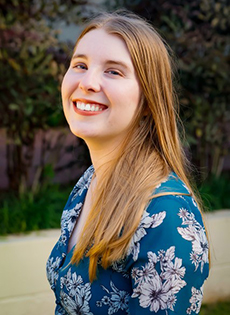
Could the Eucharist be revealed in a secular poem?
Wednesday, July 2, 2025
Emily Chaffins
When many of us were forced to read poetry in school, it felt as pleasant as nails scraping a chalkboard. In middle school, I was among the ranks of those who “just don’t get” what’s so great about poetry.
Then, in high school, everything changed.
Renowned Catholic author Sally Thomas of Homeschool Connections transformed the way I view poetry. I still treasure the poems she introduced me to, especially “The Strawberry Shrub” by Pulitzer Prize-winner Edna St. Vincent Millay.
Before inviting you to reflect on the poem with me, I’ll preface this by saying that, coming from a fiction-writing background, I initially didn’t understand that reading poetry is different from reading prose.
To become immersed in a poem, it’s critical to read it aloud, because reading in your head won’t capture the poem’s “music.” Just as importantly, always read it at least twice.
Reading a poem is almost an act of faith.
The first reading is like cannonballing into a freezing pool. It’s a leap of faith, a surrender. You’re not trying to fully understand the poem – you’re getting acclimated to the temperature.
On the second read, you can dive deep. You still might not understand, but you can pay more attention to what the poem’s narrator or “speaker” is saying – after you’ve gotten over the initial shock of cold water, you can better listen to the swim coach.
Without further ado, let’s read “The Strawberry Shrub”! Then, we’ll reflect on how this secular poem offers profound insight into the deepest mysteries of our faith when read “through the Catholic lens.”
The Strawberry Shrub (from Mine the Harvest)
Strawberry Shrub, old-fashioned, quaint as quinces[1],
Hard to find in a world where neon and noise
Have flattened the ends of the three more subtle senses;
And blare and magenta are all that a child enjoys.
More brown than red the bloom—it is a dense colour;
Colour of dried blood; colour of the key of F.
Tie it in your handkerchief, Dorcas, take it to school
To smell. But no, as I said, it is browner than red; it is duller
Than history, tinnier[2] than algebra; and you are colour-deaf.
Purple, a little, the bloom, like musty chocolate;
Purpler than the purple avens[3] of the wet fields;
But brown and red and hard and hiding its fragrance;
More like an herb it is: it is not exuberant.
You must bruise it a bit: it does not exude; it yields.
Clinker-built[4], the bloom, over-lapped its petals
Like clapboards[5]; like a boat I had; like the feathers of a wing;
Not graceful, not at all Grecian[6], something from the provinces:
A chunky, ruddy, beautiful Boeotian[7] thing.
Take it to school, knotted in your handkerchief, Dorcas,
Corner of your handkerchief, take it to school, and see
What your teacher says; show your pretty teacher the curious
Strawberry Shrub you took to school for me.
“Now, Emily, what in the world did you get from that?”
Glad you asked!
The first thing is, “What’s literally happening in the poem?” Muddling through the SAT vocab words, we find that the poem’s speaker is teaching a child, Dorcas, to see a strawberry shrub through new eyes. But we can ask the same question about the plant that I asked about middle school poetry: What’s so great about it?
The speaker believes that Dorcas is “colour-deaf.” She can’t appreciate the strawberry shrub, and other small beauties in the world, because modern distractions “have flattened the ends of the three more subtle senses.”
St. Vincent Millay wrote in the early 1900s, but how many of us can relate to the feeling of all-consuming distraction, from the cycle of constant work to the allure of social media? But what are these “three more subtle senses” the speaker talks about?
The poem hits all five senses of sight, sound, smell, taste, and touch. However, there’s no clue about which three are “more subtle.”
Unless… could it be related to spiritual senses – the capacity to recognize Truth, Goodness, and Beauty?
Whether St. Vincent Millay intended this as her meaning, if we view the poem through these “spiritual senses,” it leads us down a fascinating trail.
In Father Mark-Mary Ames’ “The Rosary in a Year,” he talks about poetry’s potential, pointing out the Blessed Virgin Mary’s poetic prayer, the “Magnificat,” from Luke’s Gospel.
“Prose is really important in human culture and expression and in history,” he says. “It is in prose that narratives are told, that stories with full human experiences are communicated. But prose has limitations. There is something that poetry and the poets can offer that gives meaning and beauty and emotion to the events of history and the movements of the heart that prose simply cannot do justice to.”
He continues, “[In front of] the marvels of God and the mysteries of our salvation, we need more than just narrative. We need more than just prose. We need poetry and we need song to fully express our hearts and our joy.” He adds, “I believe this is the… ongoing movement of God and of our response. God enters our narrative. God enters our ordinary. He enters our prose and he makes it poetry and then song.”
In Dorcas’ view, what’s more ordinary than a strawberry shrub? The speaker admits that it “[hides] its fragrance; / More like an herb it is: it is not exuberant. / You must bruise it a bit: it does not exude; it yields.”
This brings to mind my experience of Eucharistic Adoration. It can be hard, sitting in silence, not feeling anything at all. Knowing Jesus is there even though He just looks like bread.
The reality of Jesus in the Eucharist is a “hidden” treasure. You need to quiet yourself to soak it in – it’s not instant gratification. Like the strawberry shrub, it’s not flashy. And yet, the Eucharist is far from ordinary. As soon-to-be-canonized Carlo Acutis said, “When we face the sun we get a tan… but when we stand before Jesus in the Eucharist we become saints.”
Ordinariness brings advantages. Father Ames explains: “By instituting the Most Holy Eucharist using such humble and accessible matter, bread and wine, Jesus is able to get to the ones He loves anywhere and everywhere,” including places as oppressed as concentration camps.
Similarly to the Eucharist, poems tend to be small, requiring contemplation in order to unlock the richness of the word (or, in the Eucharistic sense, Jesus the Word of God). Many poems focus on the most mundane moments, refusing to skip over the ordinary.
In “The Strawberry Shrub,” the speaker encourages Dorcas: “Take it to school, knotted in your handkerchief… / and see / What your teacher says.”
This begs the question: what is school failing to teach?
If we’re not learning to appreciate Truth, Beauty, and Goodness – to “see” with our spiritual senses – are we really learning anything of importance?
________________________________________
[1] Quinces: the fruit from a type of tree related to the rose family.
[2] Tinny: a high-pitched, hollow sound
[3] Avens: a type of flower related to roses
[4] Clinker: a type of Dutch brick
[5] Clapboard: boards that are fasted to a building, layered one on top of the other
[6] The ancient Greek art style is known for highlighting symmetry and elegance
[7] Boeotian: “dull; obtuse; without cultural refinement” (Dictionary.com)


Comments from readers